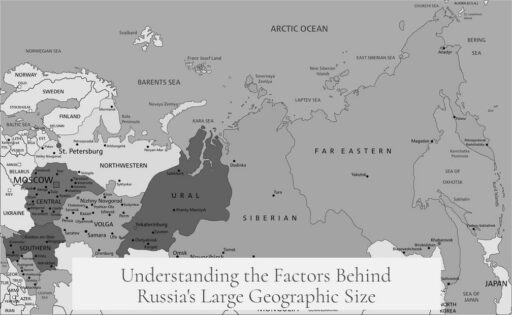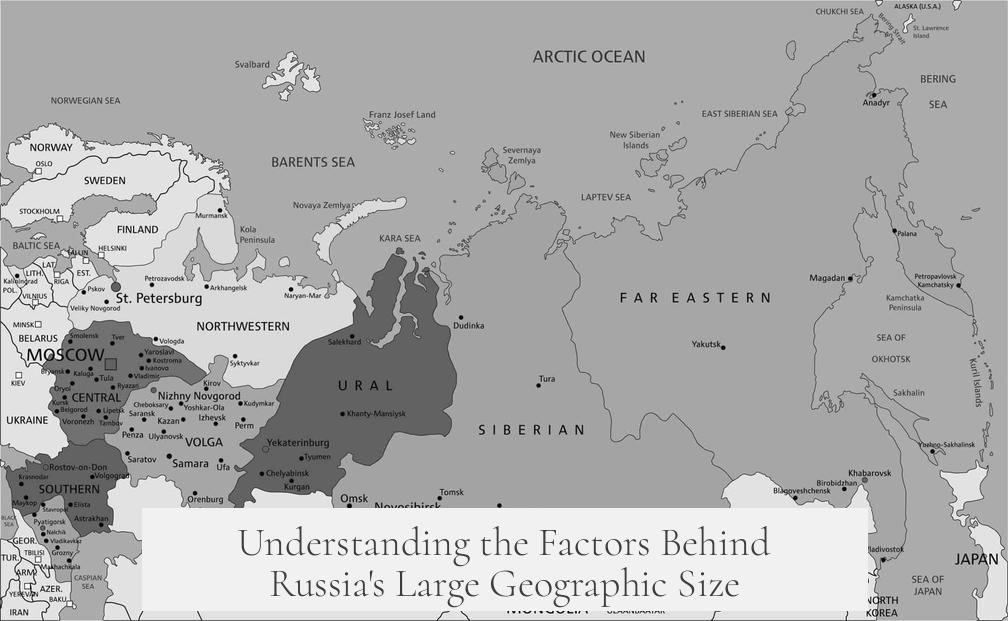Russia’s vast size results from a mix of historical, geographical, economic, and strategic factors that shaped its territorial expansion over centuries. Its territorial growth mainly emerged from deliberate eastward expansion. The Russian state pushed its borders deep into Siberia and beyond, nearly reaching the Pacific Ocean. This expansion occurred with little opposition and was fueled by several intertwined motives.
One primary driver was Russia’s need for security. The state aimed to protect its heartland from threats posed by nomadic steppe tribes. To do this, Russia established a military frontier extending eastward. This frontier included fortifications and military settlements designed to create buffer zones. These zones provided early warnings and defense lines against invasions. As areas along the frontier became settled and economically valuable, Russia pushed further east, continuously extending its military lines. This cycle explains how its borders kept moving deeper into Asia.
Economic motives also played a crucial role. Russia dominated the lucrative fur and lumber trades from the 17th through 19th centuries. These commodities were in high demand in cold European climates. Europe’s own forests had been largely depleted, making Russia’s vast Siberian resources uniquely valuable. Russia’s network of rivers flowing northward supported trade and settlement vital to this economy. Settlements like Yakutsk sprang up along these waterways to facilitate fur trading. River access gave Russia a navigable route deep into Siberia, supporting its settlements and enabling resource extraction.
Geography favored expansion as well. Eastward movement encountered relatively few natural barriers. Unlike in the west, where mountain ranges and strong European states resisted Russian expansion, Siberia presented open terrain with only minor geographic obstacles until very far east. The lack of organized political entities or powerful states in Siberia also minimized resistance. Aside from China in the south, Russia faced only small, fragmented khanates or indigenous groups. These groups were militarily weaker and less organized, allowing easier conquest and assimilation.
Russia neutralized potential threats from the Tatars and Siberian peoples through military technology, such as gunpowder weapons, and diplomacy. The state launched programs to convert local populations to Orthodox Christianity, fostering alliances and reducing opposition. The drive to eliminate nomadic threats and gain fur trade profits intertwined with religious missions, reinforcing Russian control over vast territories.
Another reason for Russia’s huge size is that much of its land was perceived as undesirable by others. Vast parts of Siberia and northern Asia are harsh environments with extreme cold and limited agriculture. Similar to Canada’s development, these “wastelands” faced little external claim or settlement for centuries. This lack of competition allowed Russia to consolidate control without facing major challenges from other powers.
Defensive strategy reinforced expansion. Russia historically lacked defensible borders. Instead, it secured its core by acquiring large buffer zones. The expanded territory forces any aggressor to cross multiple regions before reaching central Russia. This geographical depth helped Russia survive repeated invasions by Vikings, Mongols, French, and others. The need for buffer states in Ukraine, Kazakhstan, Georgia, and beyond reinforced a policy of territorial conquest to shape a strategic perimeter.
Finally, Russian expansion was opportunistic. Russian rulers faced strong resistance in western and southern Europe. Competing with established powers limited territorial growth in those directions. Eastward expansion presented less opposition and greater opportunity. The state invested resources in Siberian colonization and exploitation, taking advantage of weak rivals and sparse populations. Over time, expanding eastward added the largest portion of Russia’s present-day territory.
| Factor | Explanation |
|---|---|
| Military Frontier | Building defensive zones against steppe tribes, pushing borders eastward |
| Economic Resources | Fur and lumber trade driving settlement and control of northern riverways |
| Geography | Few natural barriers and sparse population eased expansion |
| Neutralizing Threats | Gunpowder technology and Christian conversion reduced resistance |
| Undesired Land | Harsh environment discouraged other powers from claiming territory |
| Defense | Buffer zones enhanced security against foreign invasions |
| Opportunism | Focusing eastward where less resistance existed compared to Europe |
- Russia expanded east to secure its heartland and build military frontiers.
- Economic incentives from fur and lumber trades supported settlement.
- Geographical openness and weak opponents allowed easier territorial gains.
- Conquest was reinforced by gunpowder weapons and religious conversion efforts.
- Large parts of Siberia were unattractive to others, minimizing conflict.
- Expanded borders created buffer zones for national defense.
- European resistance limited westward growth, making eastward expansion the main focus.
Why did Russia expand eastward instead of westward?
Russia faced strong opposition in the west from organized European powers. Expansion east was easier due to weaker foes and fewer natural barriers. This allowed Russia to push its borders deep into Siberia and beyond.
How did trade influence Russia’s size?
Russia controlled key resources like fur and timber. These were valuable in Europe and Asia. Access to northern rivers supported trade and settlement, encouraging expansion into Siberia.
Did natural geography help Russia become so large?
Yes. The absence of major mountain barriers in Siberia made eastward expansion easier. River routes supported movement and trade. This lack of obstacles helped Russia grow vast territories.
What role did military and defense needs play in Russia’s expansion?
Russia built military frontiers to guard against steppe tribes. Expanding territory created buffer zones to protect the core regions. This strategy continued pushing Russia’s borders outward.
Why was much of Russia’s land not claimed by others?
Large parts of Siberia were seen as wasteland and unattractive to other empires. This lack of competition let Russia claim and hold vast areas without significant conflict.




